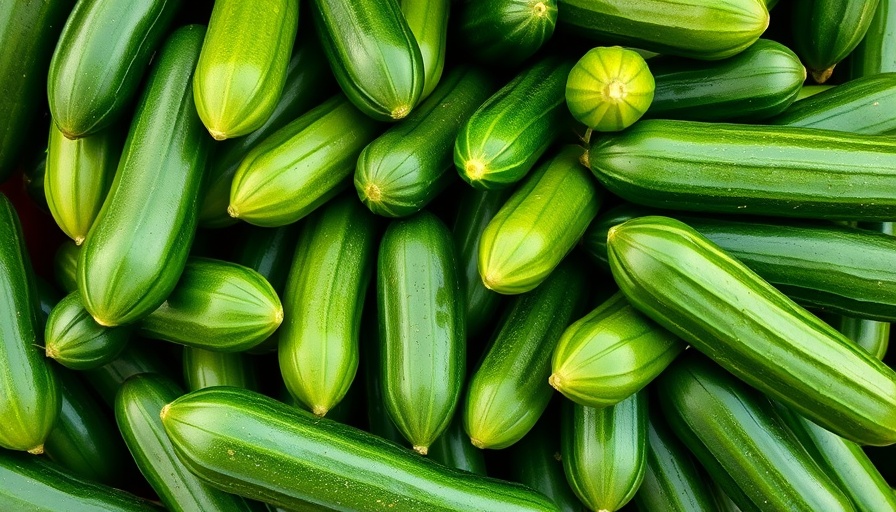
Exploring the World of Cucumber Plants: A Gardener's Guide
Choosing which type of cucumber plant to grow in your garden can be one of those rewarding decisions that seems almost too easy. With their versatile application in meals and refreshing taste, each category of Cucumis sativus offers something unique. From slicers to picklers, hybrids to heirlooms, there’s a cucumber type suited for almost every gardener’s preference and growing condition.
Understanding Types: Slicing vs. Pickling
The most common initial distinction encountered by cucumber gardeners revolves around whether the varieties are ideal for slicing or pickling. Slicing cucumbers, characterized by their thicker, dark green skins and a substantial size ranging from seven to ten inches, are commonly used in salads or served fresh. While they can be slightly bitter, many opt to peel them before consuming.
On the other hand, pickling varieties are harvested at a younger stage, usually between three to five inches. These cucumbers, often mistaken for inferior versions of their slicer counterparts, are crispy after pickling and possess a sweet flavor. Despite their size, they can excel in fresh dishes as well, making them a versatile choice for any cucumber lover.
Pollination Practices: Monoecious vs. Gynoecious
Pollination requirements provide another layer of classification among cucumber plants. Monoecious varieties, which produce both male and female flowers on the same plant, are naturally inclined to open-pollination. In contrast, gynoecious varieties primarily produce female flowers, often being bred for high yields and quicker maturation. While some gynoecious types require pollinators to produce fruit, many of them thrive on their own, allowing novice gardeners an easier experience.
Bush vs. Vining: What’s Your Garden Space?
When considering cucumber cultivation, the choice between bush and vining types can greatly affect planting decisions. Bush cucumbers typically occupy less horizontal space while growing more compactly, making them ideal for urban gardens or small backyards. These varieties can yield considerable amounts on shorter vines and allow for easier harvest.
Conversely, vining cucumbers require vertical growth and more support. They can grow significantly larger, providing athletes of the garden ample fruits. Homeowners with space for trellises or fences may prefer to stick with vining varieties to optimize their harvest.
Choosing Between Hybrids and Heirlooms
Cucumber seeds are broadly categorized into hybrids and heirlooms. Hybrid cucumbers are typically engineered for superior yields, disease resistance, and other desirable traits. They are often more productive and consistent for those looking to maximize outputs.
In contrast, heirloom cucumbers offer a delightful taste of tradition. These time-tested varieties often carry rich flavors and charm that hybrids sometimes lack. While they may be more susceptible to pests and diseases, their history and unique attributes may be worth the added effort for dedicated gardeners.
Practical Tips for Successful Cucumber Growing
To enhance your cucumber-growing experience, consider these practical tips: ensure your plants receive ample sunlight, utilize high-quality fertilizers to nourish your soil, and implement pest-resistant strategies to guard against common garden adversaries. Starting from seeds can often yield better results; thus, mastering seed starting techniques may set you on a successful path for your cucumber crops.
Embarking on Your Cucumber Gardening Adventure
Now that you have a clearer understanding of the various types of cucumber plants and their characteristics, it’s time to take action! Embrace gardening as a rewarding journey of self-sufficiency and sustainable living. Each cucumber plant offers a new learning opportunity, allowing you to connect with nature and your community, whether through sharing produce or thoughtful conversations about cultivating a garden.
So, gather your supplies, whether it’s seeds for heirloom picklers or sturdy pots for bush cucumbers, and start your gardening project today. Happy planting!
 Add Row
Add Row  Add
Add 




 Add Row
Add Row  Add
Add 

Write A Comment